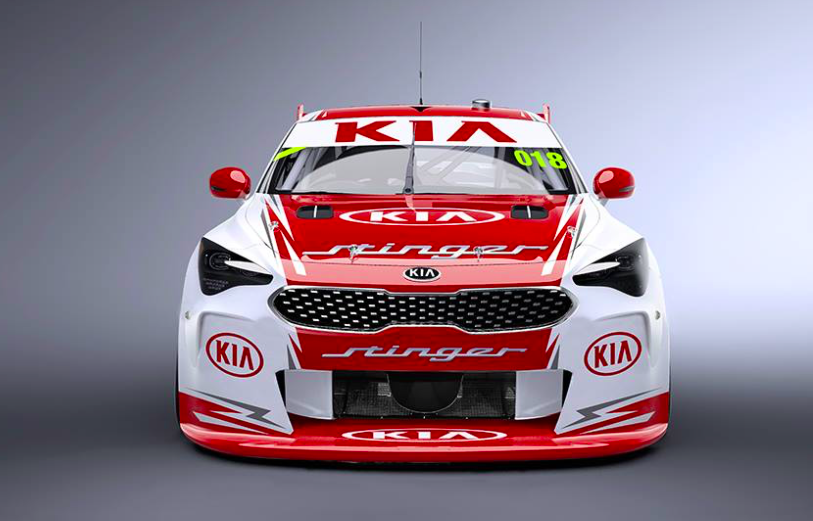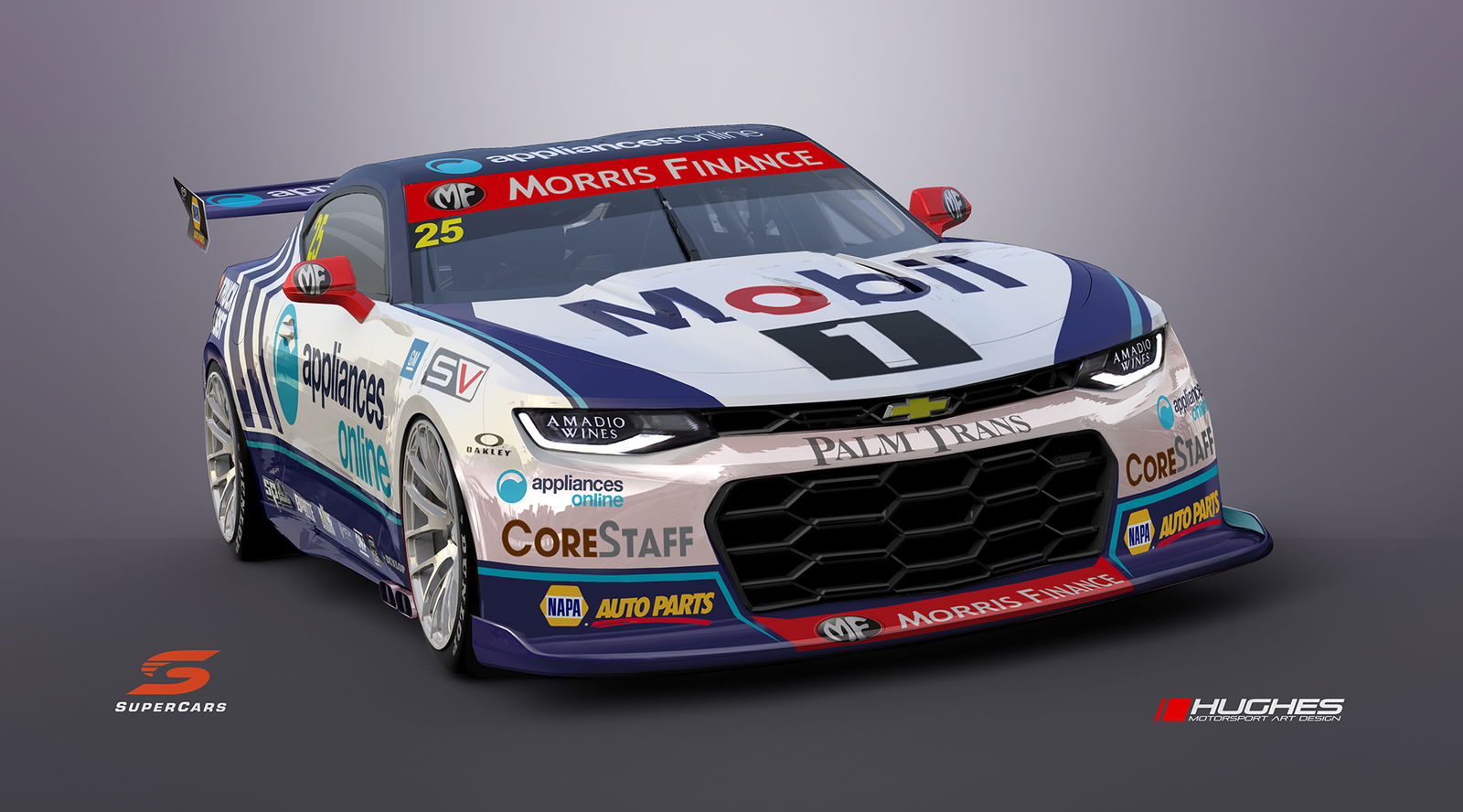
The devil is in the detail.
I’ll admit my initial impression of Supercar’s new Gen3 rules this week was ‘is that it?’ – on the surface it seems like only a minor evolution from the current Gen2/Car of the Future (COTF) regs we have now.
Seeing the striking illustrations of the new Chevrolet Camaro Supercar were great too, it looks sharp and will line-up nicely against its marketplace rival (at least in North America), the Ford Mustang. But after months (years even) of hearing Supercars want to open the sport to new manufacturers with their ‘hero models’ it was a bit of a let-down to see that the replacement for General Motors Holden was… General Motors’ Chevrolet.
Where was the Toyota Supra illustration? The Kia Stinger imagined in Supercar form? What about a Nissan Z to take on the ‘Stang?
It left me wondering: can Supercars really attract new brands to the sport that has been dominated by GM and Ford for almost its entire existence?
TOP 5: New cars we’d like to see under Gen3
Then I looked further into the details of Gen3, beyond the flashy illustrations, and into the more substantial changes Supercars have made for these new regulations. And I made some calls to people within the motoring industry.
The reviews were mixed, but there’s reason for Supercars to be optimistic.
The biggest challenge for Supercars is one they can do nothing about – the Covid-19 pandemic and the resulting recession is putting pressure on the bottom line at all car companies. It also doesn’t help that the car industry in Australia was already enduring a market correction after years of record growth before Covid made matters worse.

Assuming those obstacles can be partially or fully overcome by 2022 or 2023, where does that leave Supercars in its search for new entrants?
Well the next challenge for the sport is convincing a car brand that has little or no history in Australian touring car racing that getting involved will help sell more cars – because that’s the bottom line. Car companies don’t race for fun, they race to increase sales – pure and simple. No sales increase from racing, no more racing regardless of how competitive the car is; for an example, see Volvo.
Most leading brands will expect a significant return on investment too, generally three-to-one for every dollar spent. So Supercars will need to show that brands can extract good value from being involved, and the new television deal with Seven may assist on that front, but it will be a hard sell in the current financial climate.
Which is why Gen3 targeting a “30-40 per cent” reduction in costs compared to COTF is one of the most important details of these new regulations. It’s arguably the most important piece of information that Supercars issued in the Gen3 release – less downforce and wider, lower cars is great news for fans but the marketing executives and bean counters are the car companies will be most interested in the dollars and cents.
It’s arguably why General Motors has decided to stay involved with the Camaro, even though that model isn’t on sale in Australia anymore. It’s a cost-effective way to showcase the Chevrolet brand in Australia to help sell the Chevy Corvette and Silverado 1500 under the GM Specialty Vehicles banner.
I’m obviously not privy to the details of the deal between Chevrolet and Supercars to secure the use of the Camaro for Gen3 but I would expect GM is paying a lot less than it did for Holden during its final years in the sport.
But as good as the Camaro will look on the grid, unless GMSV brings it back to Australian showrooms, it will be an irrelevant car for new car buyers. Plus, there is a widely-held belief within the automotive industry that Chevrolet will discontinue the Camaro globally in 2023.

So what happens then? Obviously if teams invest in building Camaros for the ‘22 season they could run them for four seasons; as we’ve seen in the past final Falcon and now ZB Commodore.
However, for Supercars to really grow and ensure Gen3 is a success attracting a new manufacturer or two would be significant. So who are the most likely candidates?
Well Nissan has a long history in the sport and the forthcoming Nissan 400Z would make an ideal platform. The catch is Nissan endured an expensive and largely unsuccessful period with the Altima project, which may leave the company’s management reluctant to re-enter the fray. Plus, with or without Supercars the brand is selling a steady mix of Navara utes and SUVs.
What about Kia? The Stinger has been linked to the sport since it first arrived on the scene as a wouldbe-replacement for Commodore and Falcon fans; and Gen3 reportedly doesn’t make restrictions on bodystyle even if Supercars has only shown coupes so far.

Kia’s local management previously expressed an open-minded approach to going racing, but the biggest hurdle was the money required. Cutting costs by up to 40 per cent and the talk of a ‘white label’ V8 engine could reduce the cost-of-entry to an acceptable level for the emerging South Korean brand. The only catch is the Stinger’s sales globally haven’t been up to expectation and there are reports from Korea that there won’t be a second-generation model that’s due around 2023-24.
Our third and final candidate could be the most likely starter for Supercars – Toyota. The Japanese giant has long been a target of the sport but has always stayed an arms-length away. However, recent years have seen some major changes for the market-leader that could be enough to swing the balance in Supercars’ favour.
The biggest change has come right from the top of Toyota globally, with president Akio Toyoda pushing the brand away from its ‘whitegoods-on-wheels’ image towards more exciting and dynamic cars. He has expanded the Toyota Gazoo Racing brand into Le Mans and the World Rally Championship and now into its road car line-up with the GR Supra and upcoming GR Yaris hot hatch.
So it makes logical sense that the company would want to promote its performance brand on the biggest motorsport stage in Australia. Gazoo Racing Australia is already competing in the Australian Rally Championship because of the brand’s long-held ties to the sport and the Neal Bates Motorsport team, but with all due respect, the ARC hardly has the reach and impact that Supercars has domestically and internationally.
Toyota Australia is technically-speaking already involved with Supercars, running the 86 Series as a support class. But what if the company could spend the same amount as it does on a support category to compete in the big show with a factory-supported Supra Supercar? Could Gen3’s major cost cutting be a tipping point for Toyota? Would the insistence on a V8 engine scupper the deal because of the Supra’s six-cylinder legacy?

These are questions that need to be answered by Toyota Australia management in due course. But it’s worth noting that Toyota’s vice president of sales and marketing, Sean Hanley, was previously the man in charge at Lexus, where he openly discussed the possibility of taking the Japanese luxury brand Supercars racing under the COTF rules. He ultimately decided against it, but he could be open-minded enough to hear Supercars’ latest pitch.
When asked about Gen3 rules this week, Toyota issued the following statement: “We are currently concentrating on the Australian Rally Championship with Toyota Gazoo Racing Australia, and we remain committed to the Toyota Gazoo Racing Australia 86 Series as the premier amateur race series in Australia. These are important connections as we build our GR brand with the introduction of exciting sports cars like GR Supra and the GR Yaris.
“We have nothing further to announce regarding the future of Toyota Australia’s motorsport efforts at this time.”
While that’s an accurate explanation of the brand’s current position, you’ll notice what it isn’t is a denial. At no point does it rule out Supercars as an option for the brand, especially moving forward beyond the current ARC and 86 Series deals.
Does that mean we’ll see a Toyota Supra lining up alongside a Chevrolet Camaro and Ford Mustang at Bathurst in 2022? Maybe…













Discussion about this post